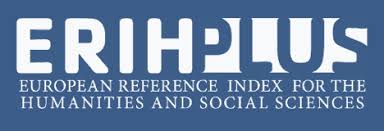№2, 2022
New requirements for modern technologies have become a driving force in the development of information technology. New distributed computing systems are required to handle a large data flow generated by the application of the Internet of Things and to ensure their efficient processing. Although cloud computing is an effective technology for processing and storing data generated in a networked environment, it has complications with the real time transmission of large amounts of data due to the low bandwidth of network. To speed up the data processing, fog computing systems have been widely used in recent years. Fog counting systems are one of the proposed solutions for working with IoT devices. Because it can meet the computing needs of multiple devices connected to the network. In these systems, the data is processed at computing nodes located near the data generating devices, which reduces the bandwidth complications of the network channel. In this regard, this article considers the application of fog computing technology in cyber-physical systems. It analyzes the fog technology architecture and its advantages over cloud computing. Cyber security problems arising when using fog technology in cyber-physical systems are analyzed and available protection methods partially solving them are highlighted (pp.23-29).
- Alakbarova, I.Y. (2020). The role of cyber-physical systems in Industry 4.0. Problems of the information technology 2, 91-101 (in Azerbaijani). https://DOI.org/10.25045/jpit.v11.i2.09
- Hong, C. (2017). Applications of Cyber-Physical System: A Literature Review. Journal of Industrial Integration and Management, 2(3), 1-28. https://doi.org/10.1142/S2424862217500129
- Hashimov, M.A. (2020). Issues of the use of fog technologies in the IoT environment. Problems of the information technology 2, 80-90, (in Azerbaijani). https://doi.org/10.25045/jpit.v11.i2.08
- Ranesh, K.N., Saurabh, K.G., Andrew, C. (2018). Fog Computing Architecture: Survey and Challenges. arXiv: Distributed, Parallel, and Cluster Computing, 199–223. https://doi.org/10.48550/arXiv.1811.09047
- Mukherjee, M., Shu, L., Wang, D. (2018). Survey of Fog Computing: Fundamental, Network Applications, and Research Challenges. IEEE Communications Surveys & Tutorials, 20(3), 1826-1857. https://doi.org/10.1109/COMST.2018.2814571
- Atlam, H.F., Walters, R.J., Wills, G.B. (2018). Fog Computing and the Internet of Things: A Review. Big Data Cognitive Computing Journal, 2(2), 1-18. https://doi.org/10.1109/CSCloudEdgeCom52276.2021.00012
- Dastjerdi, A.V., Gupta, H., Calheiros, R.N., Ghosh, S.K., Buyya, R. (2016). Fog Computing: principles, architectures, and applications. Internet of Things: Principles and Paradigms. 4, 61–75. https://doi.org/10.48550/arXiv.1601.02752
- Intel buys driverless car technology firm Mobileye. https://www.bbc.com/news/business-39253422. Accessed on 15 June, 2022.
- Toyota and Intel headline new car data consortium. https://www.businessinsider.com/toyota-and-intel-headline-new-car-data-consortium-2017-8. Accessed on 15 June, 2022.
- Meisong, W., Prem, P.J., Ranjan, R., Karan, M. (2015). An Overview of Cloud Based Content Delivery Networks: Research Dimensions and State-of-the-Art. In book: Transactions on Large-Scale Data- and Knowledge-Centered Systems XX, 131-158. https://doi.org/10.1007/978-3-662-46703-9_6
- The Data Center is Dead. https://www.gartner.com/smarterwithgartner/the-data-center-is-almost-dead. Accessed on 15 June, 2022.
- Rahul, N., Urmila, S. (2020). Fog Computing Architecture, Applications and Security Issues. International Journal of Fog Computing, 3(1), 75-105. https://doi.org/10.20944/preprints201903.0145.v1
- Pengfei, H., Sahraoui, D., Huansheng, N., Tie, Q. (2017). Survey on Fog Computing: Architecture, Key Technologies, Applications and Open Issues. Journal of Network and Computer Applications, 98, 27-42. https://doi.org/10.1016/j.jnca.2017.09.002.
- Prakash, P., Darshaun, K.G., Yaazhlene, P., Medidhi, V.G., Vasudha, B. (2017). Fog Computing: Issues, Challenges and Future Directions. International Journal of Electrical and Computer Engineering, 7(6), 3669-3673. https://doi.org/10.11591/ijece.v7i6.pp3669-3673.
- Aljumah, A., Ahanger, T.A. (2018). Fog Computing and Security Issues: A review,” 7th International Conference on Computers Communications and Control (ICCCC), (pp. 237-239). https://doi.org/10.1109/ICCCC.2018.8390464.
- Aleksandr, O., Oliver, L.M., Mikhail, K., Jari, N. (2022). A Survey of Security in Cloud, Edge, and Fog Computing. Sensors, 22(3), 927. https://doi.org/10.3390/s22030927.
- Deepak, P., Saraju, P. M., Sanjivani, A.B., Graham, M., Rajiv, R. (2019). Fog Computing Security Challenges and Future Directions. IEEE Consumer Electronics Magazine, 8(3), 92- 96. https://doi.org/10.1109/MCE.2019.2893674.
- Yehia, I.A., Ahmad, A.A., Ashraf, J., Valmira, H.O. (2021). FOG computing architecture, benefits, security, and privacy, for the internet of thing applications: An overview. Journal of Theoretical and Applied Information Technology, 99(2), 436-451.
- Ouns, B., Moayad A., Lewis T., Azzedine B. (2020). Blockchain and Fog Computing for Cyberphysical Systems: The Case of Smart Industry. Computer, 53(9), 36-45. https://doi.org/10.1109/MC.2020.2996212
- Alakbarov, R.A, Hashimov, M.A. (2019). Data Security in Fog Computing. Actual multidisciplinary scientific-practical problems of information security, V Republican Conference, Baku, Azerbaijan, November 29, 159-162, (in Azerbaijani). https://doi.org/10.25045/NCInfoSec.2019.38
- Ahmed, M.A. (2021). An Overview of Fog Computing and Edge Computing Security and Privacy Issues. Sensors, 21, 8226. https://doi.org/10.3390/s21248226.
- Mithun, M., Rakesh, M., Lei, S., Leandros, M., Mohamed, A.F., Nikumani, C., Vikas, K. (2017). Security and Privacy in Fog Computing: Challenges. IEEE Access, 5, 19293 – 19304. https://doi.org/10.1109/ACCESS.2017.2749422
- Neelam, S.K., Mohammad, A.C., (2020). Security Challenges in Fog and IoT, Blockchain Technology and Cell Tree Solutions: A Review. Scalable Computing: Practice and Experience, 21(3), 515–541. https://doi.org/10.12694/scpe.v21i3.1782.
- Bushra, Z.A., Munam, A.S. (2017). Fog Computing: Security Issues, Solutions and Robust Practices. Proceedings of the 23rd International Conference on Automation & Computing, (pp. 1-6). https://doi.org/10.23919/IConAC.2017.8082079








.jpg)



